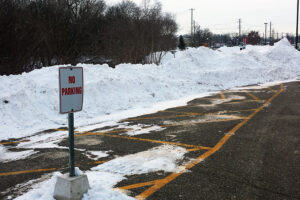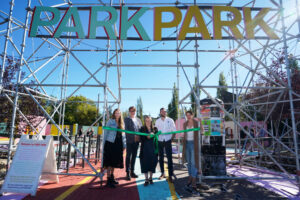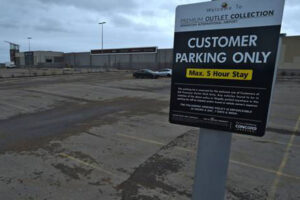By Chris Scheppmann
Parking guidance is one of the most important technologies to emerge in recent years. The initial appeal of the technology is that it dramatically improved the parking experience while, at the same time, helping to maximize parking occupancy and improve management. Drivers benefit by not having to waste valuable time searching for a parking space.
Parking guidance also benefits owners and parking organizations by providing essential data. When parking owners and managers have access to real time data about how their parking facilities are being utilized, whether they are at full or near-full capacity, and when they tend to be busiest, they can make better decisions about how to manage those parking resources. Better and more comprehensive information tends to lead to better management decisions. It easy to see how parking guidance offers a classic win/win scenario: drivers get a better parking experience, while parking owners improve their operations and make more money.
And with the impending dawn of the Smart City age and the eventual introduction of self-driving vehicles, parking guidance will become all the more important. It will be the key technology for the success of smart cities because by guiding drivers directly to available parking, it can significantly minimize travel times and reduce roadway congestion. Some cities in the United States are already connecting the parking guidance networks of private parking facilities to their municipal grids to create city-wide guidance networks, and that will soon be the norm in cities across Canada, as well.
Intelligent Simplicity
Everyone loves the concept of parking guidance, but in the past, many owners have been scared away by the cost. When the technology was introduced, owners had just two options: install sensors over every parking stall at considerable expense, or use less expensive technology that…
By Pam Strong, Lake Simcoe Region Conservation Authority
In the Q2 2020 issue of Parker magazine, we highlighted the significant issues that salt is causing to our road and parking lot infrastructure, as well as to our freshwater resources. Many stakeholders, including road managers and environmental agencies, have been working to tackle this issue and apply less salt; however much of this effort has focused on roads. As part of this effort, the Lake Simcoe Region Conservation Authority retained GHD in 2017 to develop the Parking Lot Design Guidelines to Promote Road Salt Reduction. These guidelines were developed with the recognition that parking lots contribute a significant amount of chloride from salt, approximately 20% in the Lake Simcoe watershed, and significantly more in more urbanized areas, such as Toronto and Peel Region. These guidelines provide some tangible options for those involved in parking lot design and maintenance to reduce the amount of salt that is used in these areas, thus protecting parking lot infrastructure and water resources.
The guidelines were developed to demonstrate to those involved in the planning, design, and maintenance of parking lots that they can be designed from the outset in such a way that they require less salt to be applied to maintain an acceptable level of service and safety. Through stakeholder interviews and design charrettes, we identified four design features that can help to reduce the amount of salt needed to maintain safe conditions. Also included with the guidelines are site examples that demonstrate how the features can be used on several different development types. These site types include:
- Large size commercial development (greater than 10 ha)
- Medium size commercial development (5-6 ha)
- Small size commercial development (less than 3 ha)
- Institutional development (public school)
We also developed two…
By Sidney Starkman, Planning & Development Analyst, Calgary Parking Authority
When you ask people outside of the parking industry what they think about when they hear the words “surface parking lot”, they may say: unwelcoming to pedestrians, only used at peak times or bland space. Though we can’t boast about being home to the largest parking lot in the world, we do have an awful lot of surface parking space in in Calgary, Alberta. We at the Calgary Parking Authority (CPA) believe in building a better Calgary by working collaboratively to support the current and future parking needs of the communities we serve. Given this mandate and the ample space available, we set out to change the narrative about what surface parking lots can look like, how they function, and how they integrate into a neighbourhood: we launched a placemaking project to reshape a lot by engaging professionals to innovate the space.
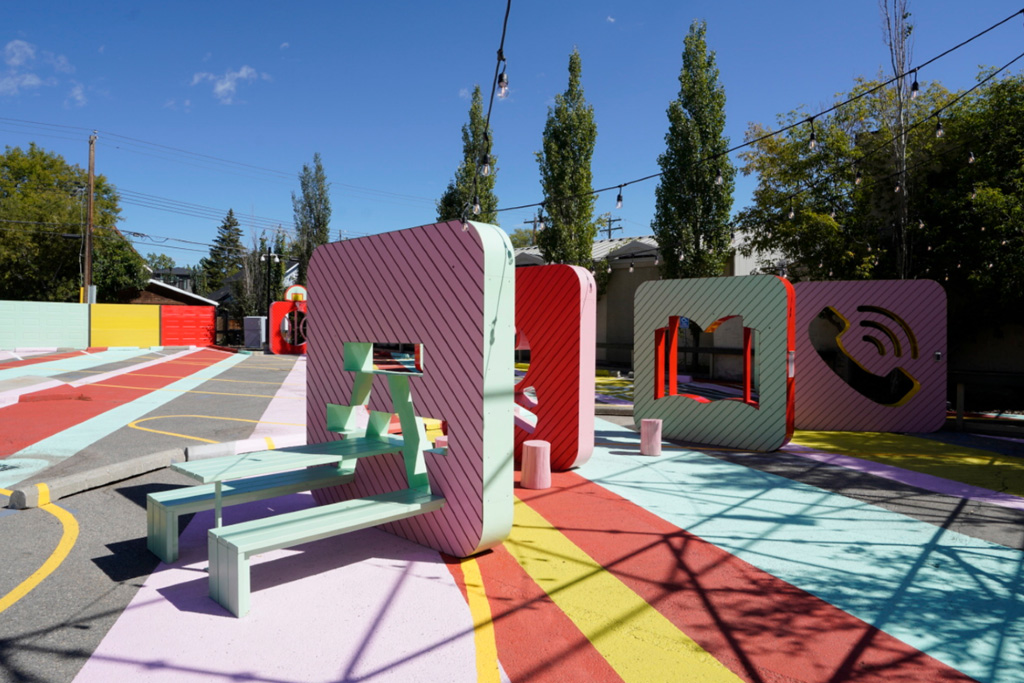
This project began with an open design competition managed by the Calgary Municipal Land Corporation (CMLC). The call for submissions asked for a creative intervention that re-imagined how surface parking lots can be designed; something that would delight and inspire, while continuing to operate successfully as a parking lot.
The goals of the project were to:
- encourage critical thought and conversation on parking lots;
- beautify a utilitarian space;
- improve the quality of life for users and residents; and,
- place make, turning a single-use space into somewhere people can have a positive, interactive, and emotional experience.
To select the perfect location, we analyzed all available surface parking options within the city. We wanted at a busy, mid-sized lot (30 stalls) which would guarantee visitors to the space, and one located in an active community where residents embrace unfamiliar projects. We were…
Hi All,
Like many Universities when COVID originally shut down our city in March 2020, McGill University suspended paid parking since only essential services (electrical and mechanical trades) were on site. The decision to restart parking came at the end of August and it has taken weeks to set up permits, passes etc for paid parking to begin September 27. Montreal is now entering a second wave and again people are being encouraged to work from home. The University is again considering suspending parking fees. Is anyone else suspending parking for a second wave or is it under consideration?
Jo-Ann Sciampacone, McGill University
By Colby Cosh
A few weeks ago, Edmonton’s council voted to remove all minimum parking requirements from real-estate developments in the city, which becomes the first in Canada to do this. Builders will, once the relevant bylaws are squared away, be free to use their own judgment in allocating parking to housing units and offices. If they choose, they can have none of it.
This was possible partly because Edmonton’s old parking requirements were absurdly grandiose. (Among its other distinctions, the city, thanks to its flagship shopping mall, is home to the world’s largest parking lot.) But it is also a triumph, in a most unexpected place, for a little band of intellectual guerrillas sometimes called the Shoupistas. They are the followers of Donald Shoup, an 81-year-old UCLA economist and urban planner who is considered the Sir Isaac Newton of parking.
Parking — boring topic, ain’t it? Shoup latched onto it as a young-ish man because he was a follower of Henry George (1839-1897), the intriguing “single tax” economic theorist of the 19th century. George favoured a tax on the unimproved value of land parcels as a way of socializing pure rent (the value earned from occupying a mere location) and encouraging development. It is a concept that many economists still like, although it is potentially difficult to apply at scale. The widely used concept of tax increment financing is one example of Georgism in practice.
Shoup started out trying to fit parking spaces into the Georgist picture, but the boring topic was so underexamined that he found himself having to build a general theory of parking. He quantified the relationship between parking and traffic, finding that people “cruising” for parking spots were more destructive than anyone had imagined, and he inspired waves of research into the hidden…
By Bob Matich
Parking structures play an important role in society and are often the first touchpoint one has with a building so, ensuring customers have a favorable experience while interacting with a parking garage becomes important in protecting revenue generated by these assets. It follows that parking structures need to be effectively maintained. By the nature of where parking garages are located and how they are used, they are subjected to the effects of harsh environmental exposure, road chemicals and daily use. One of the most critical challenges facing parking structures today is moisture penetration. Unprotected structures suffer from water-induced damage, including deterioration and corrosion caused by alkalis, salts, and acids.
The key to preventative success against detriments outlined above is utilizing a system of products designed to work together. Liquid-applied high-performance traffic membranes are a major part of such systems as they offer long-lasting protection against the most damaging conditions. While these traffic coatings are exceptionally durable to traffic, there are circumstances which can exceed the limits of even the highest performance system. This article will outline an overview of situations that should be limited or avoided, as well as periodic maintenance procedures to follow. General topics include snow removal, high heat exposure, cleanup, repair for damaged areas, repair of high wear and recoating for aesthetic purposes.
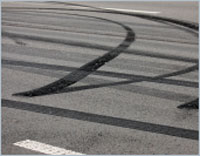
Prevention
Traffic membranes can tolerate a limited amount of extreme heat exposure. Exceeding these heat tolerances may damage or decrease the life of the system. High heat exposure may be caused by a variety of occurrences on a parking structure, including friction caused by spinning tires, non-extinguished cigarettes, or aggressive cleaning equipment. To limit exposure to high heat, it is recommended that signage be posted to limit speed, reminders to…
By Pam Strong, Lake Simcoe Region Conservation Authority
Canadian winters present many challenges for parking lot and property managers across the country, with their mix of snow, sleet, and freezing rain. The use of snowplows and the application of sand is one of the only options for colder climate areas in Canada and will generally provide the traction needed for safe conditions. In more temperate areas, however, the application of a de-icing agent is often required alongside plowing. These are typically some of the country’s more highly populated areas, making proper maintenance crucial due to the higher traffic volumes. Winter maintenance is a challenge in these areas, where temperatures often hover around the freezing mark and freeze-thaw cycles are common. However, it is in these conditions where the use of road salt (i.e. sodium chloride) has become the common, practice. As its use has become increasingly widespread over the past several years, with approximately seven million tonnes applied annually in Canada, we have also come to realize that its use comes with several significant environmental and financial consequences.
Road salt has been in use as a de-icer since the late 1940s, and it has become the most used tool in the winter maintenance toolbox. It is relatively inexpensive, generally easy to access, easy to store and use, and it is highly effective at melting snow and ice, at temperatures down to -9° Celsius. These characteristics have led to its widespread use for road maintenance, and for private residences and parking lots of all types. In 2004, Environment Canada introduced a Code of Practice for the Environmental Management of Road Salts, for use by road maintenance agencies. Since that time, these agencies have been making efforts to refine their winter maintenance practices and reduce the amount of salt…
By Kristen Locke, CAPP
Parking technology has transformed significantly in recent years. In the parking and mobility industry, there has been a surge of new enhancements to the traditional options for technology including frictionless hardware, efficient enforcement systems, smart sensors and wayfinding, and mobile parking platforms. Leaders throughout the industry now have the opportunity to innovate with their systems more than ever, and they also have the option to customize their operation with the right solution to fit their unique operational needs.
While this explosion of new technologies can come with many exciting opportunities for the municipalities, universities, private operators, and others looking to start managing increasing parking demand, adopting new technologies also comes with a lot of pressure. Not every solution is right for every organization. How does one choose between all of the options available? And what solution (or combination thereof) will provide the best experience for your users, while meeting all of your organization’s goals?
Each organization faces different challenges, serves a unique audience, and has different long-term goals. It is important to refocus and have a comprehensive understanding of what your organization is looking to accomplish before ultimately selecting the new technology that is right for you.
I’m in the market to start using a new technology solution. What do I need to know?
Prior to purchasing and implementing a new parking and mobility technology or platform for your organization, it is critical to ask the right questions. These questions should address your current needs, as well as future goals.
Some of these questions include:
• What are the biggest challenges our organization faces today and what solution will best help to alleviate them?
• What is most important to our users?



